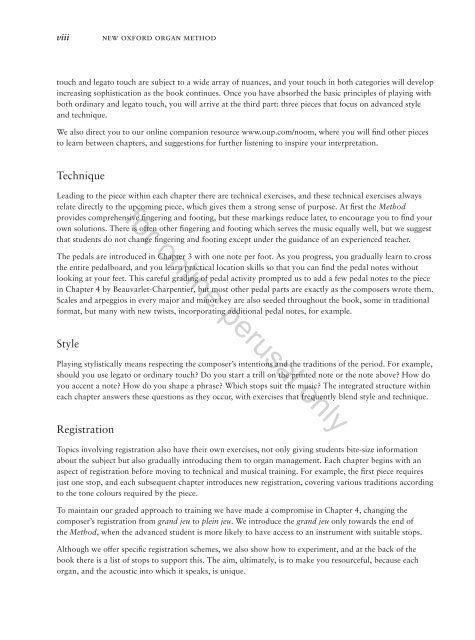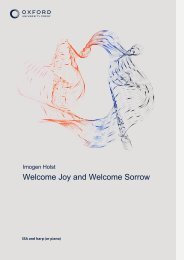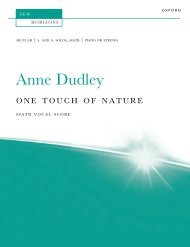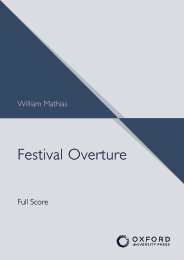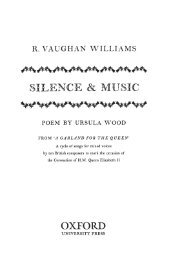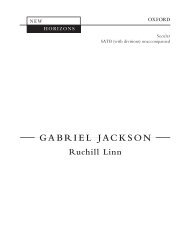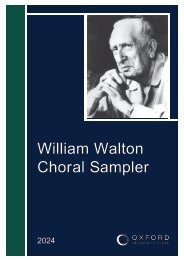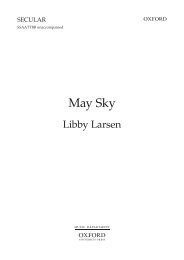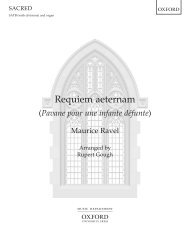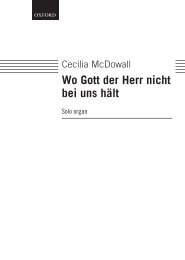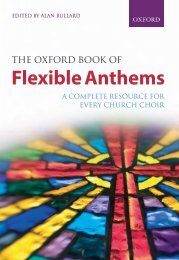New Oxford Organ Method
A single piece of repertoire is the primary focus for each chapter, with preparatory exercises providing the necessary technical work building towards the piece. Each lesson covers four main topics, which are systematically developed: practice methods, registration, fingering and pedalling, and historically-informed interpretation. The method is for keyboard players of any age who are establishing first steps at the organ with or without a teacher. It will also serve more experienced organists who want to improve their technique.
A single piece of repertoire is the primary focus for each chapter, with preparatory exercises providing the necessary technical work building towards the piece. Each lesson covers four main topics, which are systematically developed: practice methods, registration, fingering and pedalling, and historically-informed interpretation. The method is for keyboard players of any age who are establishing first steps at the organ with or without a teacher. It will also serve more experienced organists who want to improve their technique.
- No tags were found...
You also want an ePaper? Increase the reach of your titles
YUMPU automatically turns print PDFs into web optimized ePapers that Google loves.
viii<br />
new oxford organ method<br />
touch and legato touch are subject to a wide array of nuances, and your touch in both categories will develop<br />
increasing sophistication as the book continues. Once you have absorbed the basic principles of playing with<br />
both ordinary and legato touch, you will arrive at the third part: three pieces that focus on advanced style<br />
and technique.<br />
We also direct you to our online companion resource www.oup.com/noom, where you will find other pieces<br />
to learn between chapters, and suggestions for further listening to inspire your interpretation.<br />
Technique<br />
Leading to the piece within each chapter there are technical exercises, and these technical exercises always<br />
relate directly to the upcoming piece, which gives them a strong sense of purpose. At first the <strong>Method</strong><br />
provides comprehensive fingering and footing, but these markings reduce later, to encourage you to find your<br />
own solutions. There is often other fingering and footing which serves the music equally well, but we suggest<br />
that students do not change fingering and footing except under the guidance of an experienced teacher.<br />
for online perusal only<br />
The pedals are introduced in Chapter 3 with one note per foot. As you progress, you gradually learn to cross<br />
the entire pedalboard, and you learn practical location skills so that you can find the pedal notes without<br />
looking at your feet. This careful grading of pedal activity prompted us to add a few pedal notes to the piece<br />
in Chapter 4 by Beauvarlet-Charpentier, but most other pedal parts are exactly as the composers wrote them.<br />
Scales and arpeggios in every major and minor key are also seeded throughout the book, some in traditional<br />
format, but many with new twists, incorporating additional pedal notes, for example.<br />
Style<br />
Playing stylistically means respecting the composer’s intentions and the traditions of the period. For example,<br />
should you use legato or ordinary touch? Do you start a trill on the printed note or the note above? How do<br />
you accent a note? How do you shape a phrase? Which stops suit the music? The integrated structure within<br />
each chapter answers these questions as they occur, with exercises that frequently blend style and technique.<br />
Registration<br />
Topics involving registration also have their own exercises, not only giving students bite-size information<br />
about the subject but also gradually introducing them to organ management. Each chapter begins with an<br />
aspect of registration before moving to technical and musical training. For example, the first piece requires<br />
just one stop, and each subsequent chapter introduces new registration, covering various traditions according<br />
to the tone colours required by the piece.<br />
To maintain our graded approach to training we have made a compromise in Chapter 4, changing the<br />
composer’s registration from grand jeu to plein jeu. We introduce the grand jeu only towards the end of<br />
the <strong>Method</strong>, when the advanced student is more likely to have access to an instrument with suitable stops.<br />
Although we offer specific registration schemes, we also show how to experiment, and at the back of the<br />
book there is a list of stops to support this. The aim, ultimately, is to make you resourceful, because each<br />
organ, and the acoustic into which it speaks, is unique.


